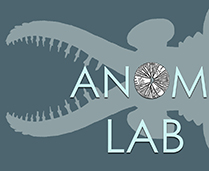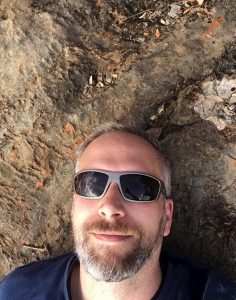Research interest
During the Precambrian to Cambrian transition, the largest changes ever to affect the Earth’s biosphere took place. My particular interests focus on the strange fossils of the latest Precambrian (Ediacaran) as well as the evolution of the first animals during the earliest Cambrian. I am interested in the earliest evolution of sponges and corals through this interval of time, the reefs that they form, and the role that they played in ecosystem construction. My research has a number of aspects from the growth dynamics of living organisms to fossil preservation and the death and decay of organisms. I completed my doctorate at Oxford University, UK, in 2008, and after several lectureships and research positions I am now a senior researcher at the University of Lausanne.
Highlighted publications
- Saleh, F., Antcliffe, J.B., Lefebvre, B., Pittet, B., Laibl, L., Perez Periz, F., Lustri, L., Gueriau, P. & Daley, A.C. 2020. Taphonomic bias in exceptionally preserved biotas. Earth and Planetary Science Letters 529, 115873.
- Daley, A.C., Antcliffe, J.B., Drage, H.B. & Pates, S. 2018. Early fossil record of Euarthropoda and the Cambrian Explosion. PNAS 115, 5323–5331.
- Landing, E., Antcliffe, J.B., Geyer, G., Kouchinsky, A., Bowser, S.S., & Andreas, A., 2018. Early evolution of colonial animals (Ediacaran Evolutionary Radiation-Cambrian Evolutionary Radiation-Great Ordovician Biodiversification Interval). Earth Science Reviews 178, 105-135.
- Brasier, M.D., Norman, D.B., Liu, A.G., Cotton, L.J., Hiscocks, J.E.H., Garwood, R.J., Antcliffe, J.B. & Wacey, D. 2017. Remarkable preservation of brain tissues in an Early Cretaceous iguanodontian dinosaur. Geological Society Special Publication 448, 383-398.
- Antcliffe, J.B., Hancy, A.D. & Brasier, M.D. 2015. A new ecological model for the similar to 565 Ma Ediacaran biota of Mistaken Point, Newfoundland. Precambrian Research 268, 227-242.
- Brasier, M.D., Antcliffe, J.B., Saunders, M. & Wacey, D. 2015. Changing the picture of Earth’s earliest fossils (3.5-1.9 Ga) with new approaches and new discoveries. PNAS 112, 4859-4864.
- Antcliffe, J.B., Callow, R.H.T. & Brasier, M.D. 2014. Giving the early fossil record of sponges a squeeze. Biological Reviews 89, 972-1004.
- Brasier, M.D. & Antcliffe, J.B. 2009. Evolutionary relationships within the Avalonian Ediacara biota: new insights from laser analysis. Journal of the Geological Society 166, 363-384.
- Antcliffe, J.B. & Brasier, M.D. 2008. Charnia at 50: Developmental models for Ediacaran fronds. Palaeontology 51, 11-26.
- Antcliffe, J.B. & Brasier, M.D. 2007. Charnia and sea pens are poles apart. Journal of the Geological Society 164, 49-51.

